Save a Life, Carry Naloxone.
If you or someone you care about is using opioids in any form, it is important to have a naloxone kit in your home to prevent injury or death associated with overdose.
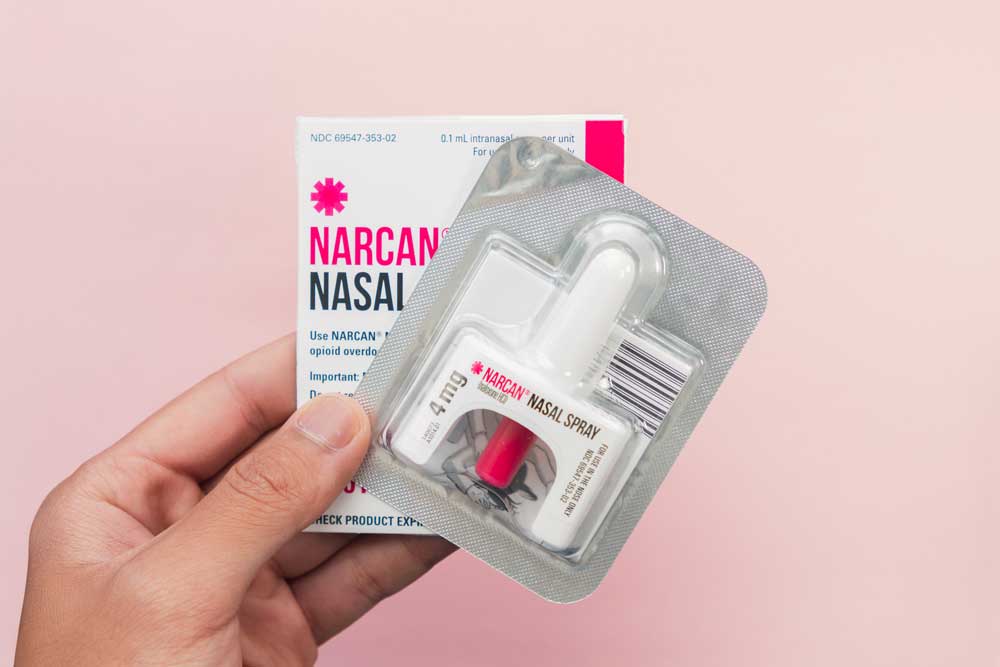
Naloxone is a medication that can temporarily reverse the effects of an opioid overdose. If you or anyone you know is using opioids in any form, it is important to carry a Naloxone kit. Administering Naloxone in an opioid emergency can save a life.
Watch this step-by-step instructional video to learn how to administer Naloxone to a person experiencing an opioid overdose.
A number of local pharmacies provide Naloxone kits and training onsite at no cost. A prescription or health card is not required. Visit https://www.ontario.ca/page/get-Naloxone-kits-free to find a list of participating pharmacies near you.
Below is a list of participating community organizations that provide naloxone kits to clients onsite and at no cost.
| Organization | Web Address | Hours of Operation | Other Details |
|---|---|---|---|
| Pozitive Pathways Community Services 511 Pelissier St. Windsor, ON 519-973-0222 | https://www.pozitivepathways.com/ | Mon-Fri 9:00 am – 5:00 pm | No appointment required. Training session provided. |
| Canadian Mental Health Agency- Youth Wellness Hub 215 Eugenie St. Windsor N8X 2X7 519-800-8640 | Mon thru Friday 1pm-7pm, | Drop-in hours: Mon thru Friday 1pm-7pm | |
| Canadian Mental Health-City Centre Health Care 1400 Windsor Ave. Windsor, ON 519-971-0116 | Mon,Wed,Thu Tue Fri | ||
| Can-AM Friendship Centre 3905 Tecumseh Rd. E. Windsor, ON 519-253-3243 | http://caifc.ca/ | Mon-Fri 9:00 am – 5:00 pm | No appointment required. Individual will receive a 15-minute training session. |
| Caldwell First Nations 14 Orange St. Leamington, ON 519-322-1766 | http://www.caldwellfirstnation.ca/ | Mon-Fri 8:30 am – 4:00 pm | No appointment required. |
| Downtown Mission 664 Victoria Ave. Windsor, ON 519-973-5573 x143 | https://www.downtownmission.com/ | Mon-Fri 9:00 am – 5:00 pm | No appointment required. Individual will receive a 15-minute training session. |
| Erie St. Clair Leamington 15 John St. Leamington, ON 519-326-7742 | http://www.eriestclairclinic.com/ | Mon-Fri Sat-Sun | No appointment required. Individual will receive a 15-minute training session. |
| Erie St. Clair Clinic Windsor 1574 Lincoln Rd. Windsor, ON 519-946-0267 | http://www.eriestclairclinic.com/ | Mon/Fri Tu Wed/Th | No appointment required. Training session provided. |
| Essex County Homelessness Hub-Family Service Windsor Essex. 215 Talbot St E 519-326-8629, ext. 395 | https://fswe.ca/ | Open 7 days a week (9am-5pm) | No appointment necessary |
| Family Services Windsor 1770 Langlois Ave. Windsor, ON 519-966-5010 x1029 | https://fswe.ca/ | Mon-Th Fri Sat | Naloxone kits provided to clients of Family Services Windsor only. |
| Hotel-Dieu Grace Health Care 1453 Prince Road Windsor, ON N9C3Z4 519-257-5111 | https://www.hdgh.org/ | Mon - Fri 8:00 am - 4:00 pm | Naloxone kits are for their active clients only |
| Southwest Ontario Aboriginal Health Access Centre (SOAHAC) 1405 Tecumseh Rd. W Windsor 519-916-1755 | http://soahac.on.ca/ | Mon, Wed - Fri 8:30 am - 4:30 pm | |
| Windsor Youth Centre 1247 Wyandotte St. E. Windsor, ON 226-674-0006 | https://www.thewindsoryouthcentre.org/ | Mon-Sat 5:00 pm- 10:00 pm | No appointment required. Education session included. Clients, family, & friends can access the kits. |
| Windsor Essex Community Health Centre-Street Health 711 Pelissier St. Windsor, ON 519-997-2824 | http://www.wechc.org/streethealth_home | Mon-Fri 8:30 am – 3:30 pm | No appointment required. Education session included. |
If you think someone is overdosing, call 9-1-1 and stay with the person until EMS arrives.
If you have Naloxone on-hand and someone you are with is experiencing an overdose, administer the Naloxone right away. If you are unsure of what to do or cannot remember, there are directions in the Naloxone kit that are easy to follow.
An overdose is always an emergency. After Naloxone is administered, a trained health provider should conduct a thorough health assessment to be sure that there are no other potential causes of the overdose. It is also important to understand that Naloxone only temporarily reverses the opioid overdose and symptoms may return. For these reasons, 9-1-1 should always be called.
5 Steps to Respond to an Opioid Overdose Using Naloxone Nasal Spray
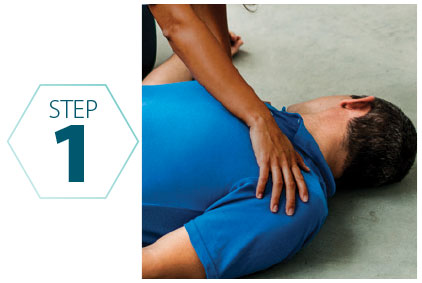
SHOUT their name
& SHAKE their shoulders
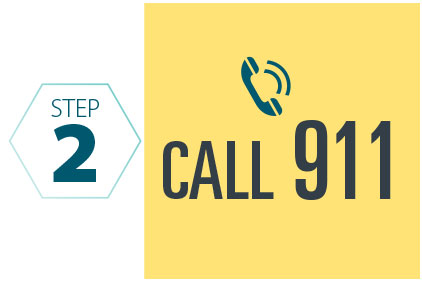
CALL 911
If they do not respond. Lay them on their back.
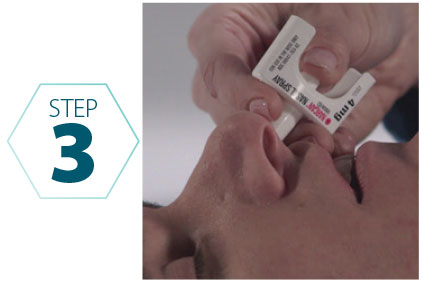
GIVE NALOXONE
Gently insert the tip of the nozzle into the nostril and press the plunger with your thumb to give the dose of naloxone. Do not test the spray.
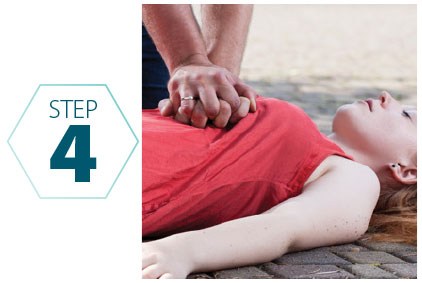
PERFORM CHEST COMPRESSIONS
(push HARD and FAST with each compression)
OR START CPR, if trained.
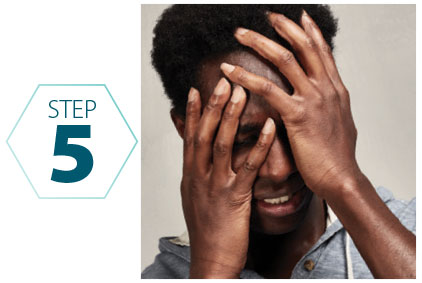
IS IT WORKING?
If no response after 2 to 3 minutes, repeat steps
3 and 4 (alternating nostrils) until person
responds or EMS arrives. Stay with them.
SIGNS of an OVERDOSE
Person is not responding
Breathing is slow or absent
Snoring/gurgling sounds
Blue fingernails or lips
Cold clammy skin
Pupils are tiny
Get a FREE naloxone kit at a local pharmacy or participating community organization.
If the person RESPONDS, place in the Recovery Position
to help keep their airway open and prevent choking.
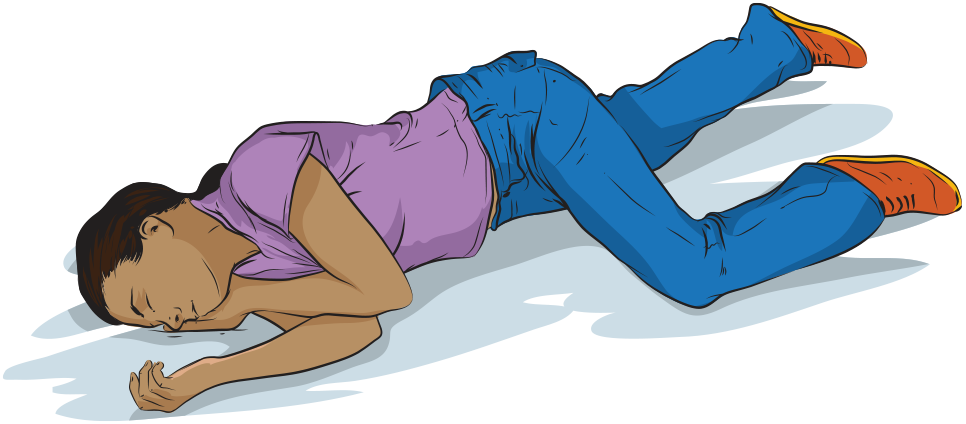
head should be tilted back slightly to open airway
hand supports head
knee stops body from rolling onto stomach
- The National Overdose Response Service (NORS) is a 24/7 virtual safer consumption and overdose prevention hotline. If you use drugs, call or text 1-888-688-6677 before you use to connect with people who can help keep you safe.
- Store opioids securely: Keep opioids out of reach of children and others who should not have access to them.
- Avoid mixing opioids with alcohol or other drugs: Mixing opioids with other substances, especially alcohol, can increase the risk of overdose and other dangerous side effects.
- Start with a low dose: If you're new to using opioids, start with a low dose and be cautious when increasing the dose.
- Avoid using opioids when alone: If you use opioids, make sure someone else is with you who can respond in the event of an overdose.
- If you are prescribed opioids by a healthcare professional, use them as prescribed.
- Have Naloxone on hand: Naloxone is a medication that can reverse an opioid overdose, so it's a good idea to have it on hand if you use opioids.
- Call 9-1-1 immediately if something doesn’t feel right.
ONE OPIOID OVERDOSE
IS TOO MANY
YOU CAN SAVE A LIFE
Drug overdoses can happen with others around.
IF YOU EXPERIENCE OR WITNESS AN OVERDOSE,
CALL 911
THE GOOD SAMARITAN DRUG OVERDOSE ACT
Essex County police agencies want to reduce the fear of police attending overdose events and to promote PROTECTION OF LIFE.
The Good Samaritan Drug Overdose act provides some legal protection for people who experience or witness an overdose and call 9-1-1 for help.
The act can protect you from:
- Charges for possession of a controlled substance (i.e. drugs) under section 4(1) of the Controlled Drugs and Substances Act
- Breach of conditions regarding simple possession of controlled substances (i.e. drugs).
The act DOES NOT provide legal protection against more serious offences, such as:
- outstanding warrants
- production and trafficking of controlled substances
- all other crimes not outlined within the law
Developed by the WECOSS- Enforcement and Justice working group
Canada's Good Samaritan Drug Overdose Act provides some legal protection for people who experience or witness an overdose and seek emergency help by calling 911 in an overdose situation.
What is Naloxone?
- Naloxone, or Narcan®, is an antidote to opioid overdose. Dosages of an opioid (e.g., morphine, heroin, methadone, oxycodone, and fentanyl) that are too high can slow down or stop breathing. Naloxone can reverse this reaction and restore normal breathing and consciousness. Giving Naloxone can prevent death or brain damage from lack of oxygen during an opioid overdose. It does not work for non-opioid overdoses (e.g., cocaine, ecstasy, GHB or alcohol). However, if an overdose involves multiple substances, including opioids, Naloxone helps by temporarily removing the opioid from the equation.
How is Naloxone given?
- Naloxone nasal spray was developed to be used by individuals without the need for any medical training. If you suspect an opioid overdose, administer Naloxone nasal spray and get emergency medical assistance right away. Naloxone is an opioid overdose reversal medication and should be part of an opioid safety checklist. Naloxone is safe and easy to use. Individuals can learn how to administer the spray within 10 minutes by watching the Naloxone Training Video.
- Naloxone can also be administered by injection (e.g., into a muscle, vein, or under the skin).
- Community-based overdose prevention programs are empowering. They give peers, friends, and families of people who use opioid drugs the chance to save a life. However, the availability of Naloxone in community pharmacies does not replace the need for emergency care or minimize the importance of calling 9-1-1.
How does Naloxone work?
- Both Naloxone and opioids bind to the same receptor sites in the brain that affect breathing. However, Naloxone binds more tightly than the opioids, knocking the opioids off the receptors and restoring breathing. Naloxone acts fast (usually within 5 minutes), and the protective effect lasts for 30 to 90 minutes. The body will have broken down some of the opioids over time, but Naloxone does not destroy the opioids., If large doses, strong opioids (e.g., fentanyl), or long-acting opioids (e.g., methadone) are involved, another dose of Naloxone may be needed. It is always important to call 911 when someone overdoses.
- Recall the 5 steps when responding to an overdose:
Is Naloxone safe to use?
- Naloxone is safe to use.
- The only risk factor to using Naloxone is a known hypersensitivity to it. Naloxone may cause opioid withdrawal in those who use opioids. Withdrawal symptoms include pain, high blood pressure, sweating, agitation, and irritability. It can be unsettling to come out of an overdose unaware of what has happened. Also, people with health conditions (e.g., heart, liver, respiratory etc.) and/or who have taken other substances need additional medical attention. For these reasons, calling 9-1-1 is an important component of the overdose response. Naloxone is considered safe for everyone unless there is a reason to believe a person has a previous allergy (or hypersensitivity) to Naloxone.
- Naloxone has been used in Canada for over 40 years and is on the World Health Organization List of Essential Medicines. Naloxone has NO effect on someone that has not taken opioids.
Can someone experience a Naloxone addiction?
- Naloxone does not cause addiction, cannot get a person high, and does not encourage opioid use. While Naloxone is a safe drug, it may cause withdrawal for individuals who use opioids. However, the small doses available in community pharmacy settings should minimize this risk.
- Research demonstrates that Naloxone availability does not increase risk-taking behaviour or cause increased opioid use. The goal of Naloxone distribution and training is to prevent, recognize, and respond to an overdose to reduce overdose harms and deaths.
Why is it important to stay with an individual after giving them Naloxone?
- Naloxone only lasts for 30 to 90 minutes so it’s possible that the person could go into respiratory arrest again due to the opioids still in their system. Medical professionals can help provide the necessary treatment to prevent respiratory failure.
- Some longer acting opioids (e.g., methadone) may stay in the body longer than Naloxone, and an overdose may return. To decrease the likelihood of an overdose returning, individuals should avoid consuming additional drugs for several hours following Naloxone administration. Individuals may also be confused and will need to be told what happened. It is also important to tell emergency first responders everything about the situation so they can provide the best treatment possible.
Will Naloxone help if the person overdosed on drugs other than opioids?
- No, Naloxone only works to reverse an overdose involving opioids (e.g., morphine, heroin, methadone, oxycodone, and fentanyl).
If I don’t know what the person used, should I administer Naloxone anyway?
- Yes, Naloxone is a very safe drug and will not adversely impact someone who has overdosed on other drugs (e.g., cocaine, ecstasy, GHB) or alcohol.
I’ve heard that 1 or 2 doses of Naloxone may not be enough. Is that true?
- Yes, overdoses may require repeated administrations of Naloxone to restore breathing.
Won’t the person who overdosed be arrested for possession and potentially other charges if 911 is called and the police arrive?
- The Good Samaritan Drug Overdose Act provides some legal protections for individuals who call 9-1-1 in an overdose situation to encourage people to seek help. For more information, visit wecoss.ca
If I don’t have any Naloxone and someone has overdosed, what should I do?
- Call 9-1-1 and perform chest compressions/rescue breathing until the paramedics arrive.
Does Naloxone expire?
- There is an expiration date on Naloxone (usually about 2 years from the date of production), however, research indicates that it can be effective well beyond the expiration date on packaging, in some cases, months and years later. The safest practice is to get a replacement (e.g., setting a reminder on your phone’s calendar), but in the case of an emergency, it’s better to use an expired dose than to not administer anything.
How should I store my Naloxone kit?
- Keep it in a cool and dark place.
- Keep it on your person or of someone you know that uses.
- Make sure you tell others where your Naloxone kit is stored, in case of an emergency.
What are the safe practices when handling potentially fentanyl laced materials?
- If you have come into contact with fentanyl or other synthetic opioids, know that skin exposure to fentanyl is extremely unlikely to immediately harm you.
- If your skin does come in contact with fentanyl or other potent synthetic opioids, wash the area with soap and water to remove the drug from your skin. Soap and water easily removes fentanyl residue.
- Do not use alcohol-based hand sanitizers as these may increase the absorption of the drug into the skin.
- When handling any suspicious substances, such as suspected fentanyl, it’s important to wear the appropriate personal protective equipment – especially in situations where airborne fentanyl powder is present or if there is environmental contamination. Worn correctly, personal protective equipment will protect you. This includes gloves, respiratory protection (masks), and safety glasses. Don’t use powdered gloves because the powder may increase the risk of spreading contaminants to other surfaces. Be sure to put on and remove your personal protective equipment correctly.
- If you suspect an opioid overdose, administer Naloxone immediately and call 9-1-1 (or your local emergency help line). Naloxone is a fast-acting drug that temporarily reverses the effects of an opioid overdose.
References
[1] Ontario Pharmacists Association. (2020). Naloxone: Frequently asked questions. Retrieved from https://opatoday.com/Naloxone-frequently-asked-questions/
[2] Partnership to End Addiction. (2022). Naloxone: Frequently asked questions. Retrieved from: https://drugfree.org/article/Naloxone-frequently-asked-questions/

